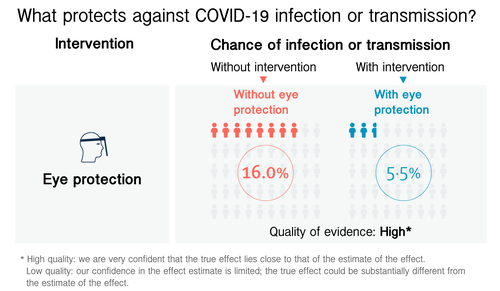Communicating Quality of Evidence
Winton Centre for Risk and Evidence Communication
Project - Communicating quality of evidence

In virtually every area of life we have to rely on evidence and claims provided by others, whether we're making personal medical or financial decisions, or making professional decisions such as what to do about a suspected terrorist threat based on national intelligence or assessing the evidence that someone is guilty of a crime. The question then arises - how much weight should we put on that evidence or claim? How solid is it?
Evidence can be limited by things such as disagreement between experts, limited knowledge/sample size, biases in reporting, or the fact that the evidence gathered is rather tangential to the problem under consideration. How should this be communicated to a decision-maker?
We are currently reviewing methods of the communication of quality of evidence across many diverse fields, as well as any empirical work done to test how well these methods communicate their intended information. We are also running empirical studies of our own with the aim of developing advice for those wishing to communicate quality of evidence.
Our empirical work to date has shown that people care about knowing the quality of the evidence that underlies information, such as effectiveness claims for a certain intervention or behavioural recommendation. In a decision making context, for instance with regards to medical treatment options, people consider both effectiveness information as well as the quality of the underlying evidence. Our data shows that people place high value on quality of evidence information when making decisions.
A further suite of studies investigated the effects that providing quality of evidence information has on people's trust of the claim or recommendation at hand as well as the extent to which people consequently choose to use the provided information for decision making. We compared effects of providing high, low, and ambiguous quality of evidence indicators with not providing any quality of evidence information at all. We find that the way in which quality of evidence is presented to people affects their trust and decision making. Our results show an asymmetric relationship such that people appear to adjust downward more steeply than they adjust upward: while effects of providing high quality of evidence information is not much different from not providing quality of evidence information at all; low or uncertain quality of evidence information leads to a steep decline in trust and use of the information in personal and other oriented decision making. Strikingly, our data to date suggests that ambiguous quality of evidence information can lead to as much of a decline in trust and decision making as low quality of evidence.
These findings suggest that in the absence of quality of evidence information people tend to assume a high quality level. If people are provided with quality of evidence information that is uncertain as to its level, they tend to assume low quality. These findings are important for practice as the omission of quality of evidence information on claims and statistics could lead people to trust the information more than might be warranted. Likewise, if people are presented with ambiguous quality information they might discount the information unjustly.
In another project we are exploring the effects of providing an explanation for why a certain piece of behavioural advice is given, such as why it is recommended to observe social distancing as a measure to reduce spread of and infection with coronavirus. We find that people's perceptions of the quality of the evidence that underlies the presented information affects their trust in the advice and their intentions to follow the health recommendations: if people perceive the information as low quality evidence then they are less likely to trust the recommendation and less likely to follow the advice.
Download our summary leaflet, which provides an overview of our empirical work around quality of evidence communication, including links to our published papers: